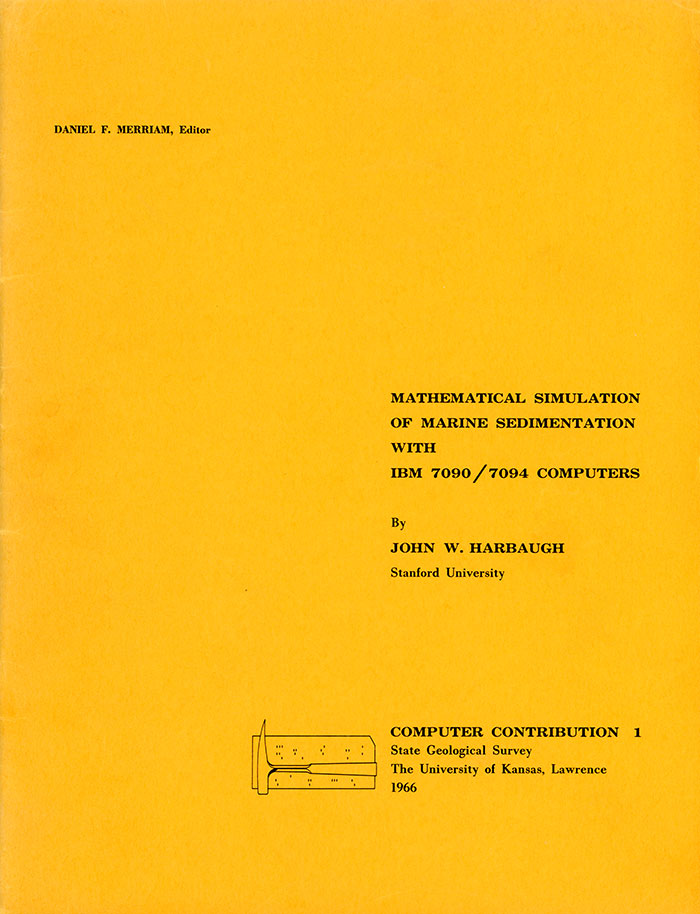
Kansas Geological Survey, Computer Contributions 1, originally published in 1966
Stanford University

Originally published in 1966 as Kansas Geological Survey Computer Contributions 1.
A mathematical model of marine sedimentation, using IBM 7090/7094 computers, imitates the behavior of sediments as they are transported and deposited within a marine sedimentary basin. By mathematical means, in symbolic three-dimensional space, the model imitates the processes of tectonic warping, winnowing of sediments along beaches, formation of deltas, and the growth and interaction of organism communities, including algal banks and coral reefs, that populate the sea floor. The model is operated by assuming a set of external controlling conditions and feeding these into the computer as numerical data. The model is then run forward, by increments, through geologic time. The effect of several million years geologic history can be studied in 15 minutes computing time.
Output from the computer program representing the model is in the form of lithofacies maps, structure maps, biofacies maps, sea-water depth maps, and geologic cross sections that show both structure and facies relationships. A series of maps and cross sections can be printed for each increment of geologic time making it possible to observe progressive geologic changes as they occur.
The model is used as an experimental tool by observing the response to a set of assumptions. When a change in the numbers used to control the program is made, the model responds dynamically in a few seconds computer time. Deltaic deposits, ancient beaches, algal reefs, and other sedimentary features develop progressively and undergo structural deformation with startling realism.
The objective in geological mathematical modeling is to produce symbolic geologic products (such as sedimentary strata) by imitating the principal geologic processes that produce the products. There is, however, uncertainty as to the mode of operation and relative importance of many processes. Consequently, assumptions must be made. These assumptions can be tested on a trial and error basis. If the results of a computer run with the model do not agree well with reality (i.e., the symbolic deposits do not accord well with real sedimentary deposits that are being imitated, etc.), the assumptions can be progressively changed, and new runs made until the model begins to perform realistically.
The mathematical model is embodied in a BALGOL computer language (version of ALGOL-58) program which may be used with any IBM 7090 or 7094 computer, provided the BALGOL system tapes are available. The principles of the program are outlined in the report, which also contains detailed operating instructions for the program's use.
Read the PDF version (22 MB)
Kansas Geological Survey
Placed on web Aug. 27, 2019; originally published 1966.
Comments to webadmin@kgs.ku.edu
The URL for this page is http://www.kgs.ku.edu/Publications/Bulletins/CC/1/index.html